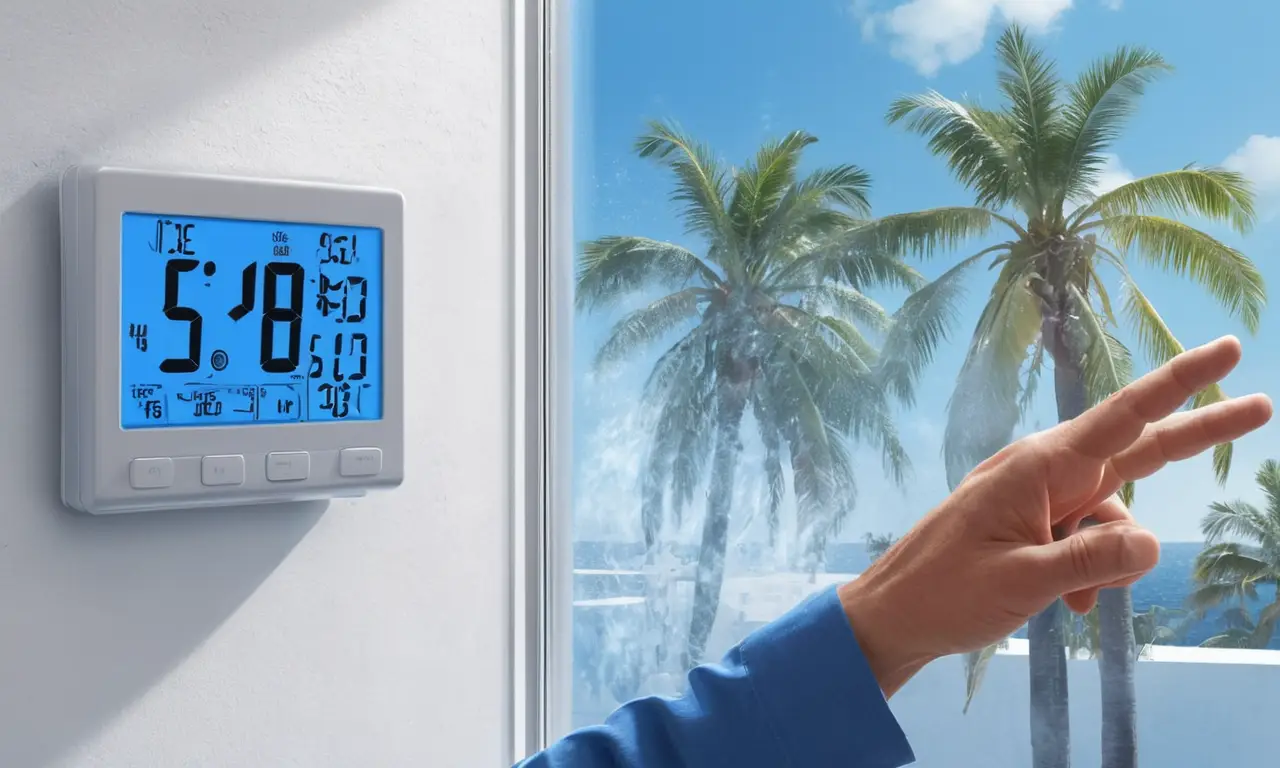
Keeping your home cool during the summer months is essential for comfort. Many people instinctively reach for the thermostat, lowering the setting to achieve a faster cooling effect. But does this actually work? While a lower thermostat setting can make a room feel cooler more quickly, it doesn’t necessarily shorten the overall time it takes to cool down your entire house.
This article will delve into the relationship between AC thermostat settings and cooling speed, exploring the factors that influence how quickly your air conditioner can bring your home to a comfortable temperature. We’ll examine the impact of insulation, sunlight exposure, room size, and other key elements to help you understand how to optimize your cooling system for maximum efficiency.
Does Lowering AC Thermostat Cool Faster?
The simple answer is: it depends. Lowering your thermostat setting does create a more immediate sensation of coolness because the air feels colder against your skin. However, your air conditioner still needs to work to reach that desired temperature. Think of it like this: lowering the thermostat is like asking for a faster car; while you might feel the difference immediately, the engine still needs time to accelerate and reach its top speed.
Your AC unit works by cycling on and off to maintain a specific temperature. When you lower the thermostat setting, your system will run more frequently and for longer periods to compensate for the larger temperature difference. This increased workload can lead to higher energy consumption and potentially strain your AC unit over time.
Impact of Thermostat Setting on Cooling Speed

While lowering the thermostat doesn’t necessarily cool faster overall, it does affect how quickly you feel a change in temperature. A lower setting creates a more noticeable difference because the air feels colder right away. However, this initial sensation won’t translate to a significantly shorter cooling time for your entire home.
The ideal thermostat setting is a balance between comfort and energy efficiency. Most experts recommend setting your thermostat to 78 degrees Fahrenheit (26 degrees Celsius) when you’re home and awake. When you’re away or asleep, you can raise the temperature by a few degrees to save energy without sacrificing too much comfort.
Factors Affecting AC Cooling Time
Several factors beyond your thermostat setting influence how quickly your air conditioner cools your home:
Insulation
Proper insulation plays a crucial role in maintaining a comfortable indoor temperature. Well-insulated walls, ceilings, and floors prevent heat from entering your home during the summer months, reducing the workload on your AC unit.
Sunlight Exposure
Direct sunlight can significantly increase the temperature inside your home. Keeping curtains or blinds closed during the hottest part of the day can help minimize solar heat gain and reduce the strain on your cooling system.
Room Size
Larger rooms require more energy to cool than smaller ones. The volume of air that needs to be conditioned directly impacts the time it takes for your AC unit to reach the desired temperature.
Insulation and Cooling Efficiency

Insulation acts as a barrier, preventing heat transfer between the inside and outside of your home.
Adequate insulation in your walls, attic, and floors can significantly reduce the amount of heat that enters your house during the summer months. This means your AC unit won’t have to work as hard to maintain a comfortable temperature, leading to faster cooling times and lower energy bills.
Sunlight Exposure and Room Temperature
Sunlight is a major source of heat gain in homes. Direct sunlight can quickly raise the temperature inside your rooms, making it feel hotter even if your AC unit is running.
Minimizing sunlight exposure during the hottest part of the day can help keep your home cooler and reduce the workload on your AC system. Consider using curtains, blinds, or awnings to block direct sunlight from entering your windows.
Conclusion
While lowering your AC thermostat setting does create a more immediate sensation of coolness, it doesn’t necessarily shorten the overall cooling time for your entire home.
Several factors, including insulation, sunlight exposure, and room size, play a significant role in how quickly your air conditioner can bring your home to a comfortable temperature. By understanding these factors and implementing strategies to minimize heat gain and maximize energy efficiency, you can optimize your cooling system for both comfort and cost savings.
